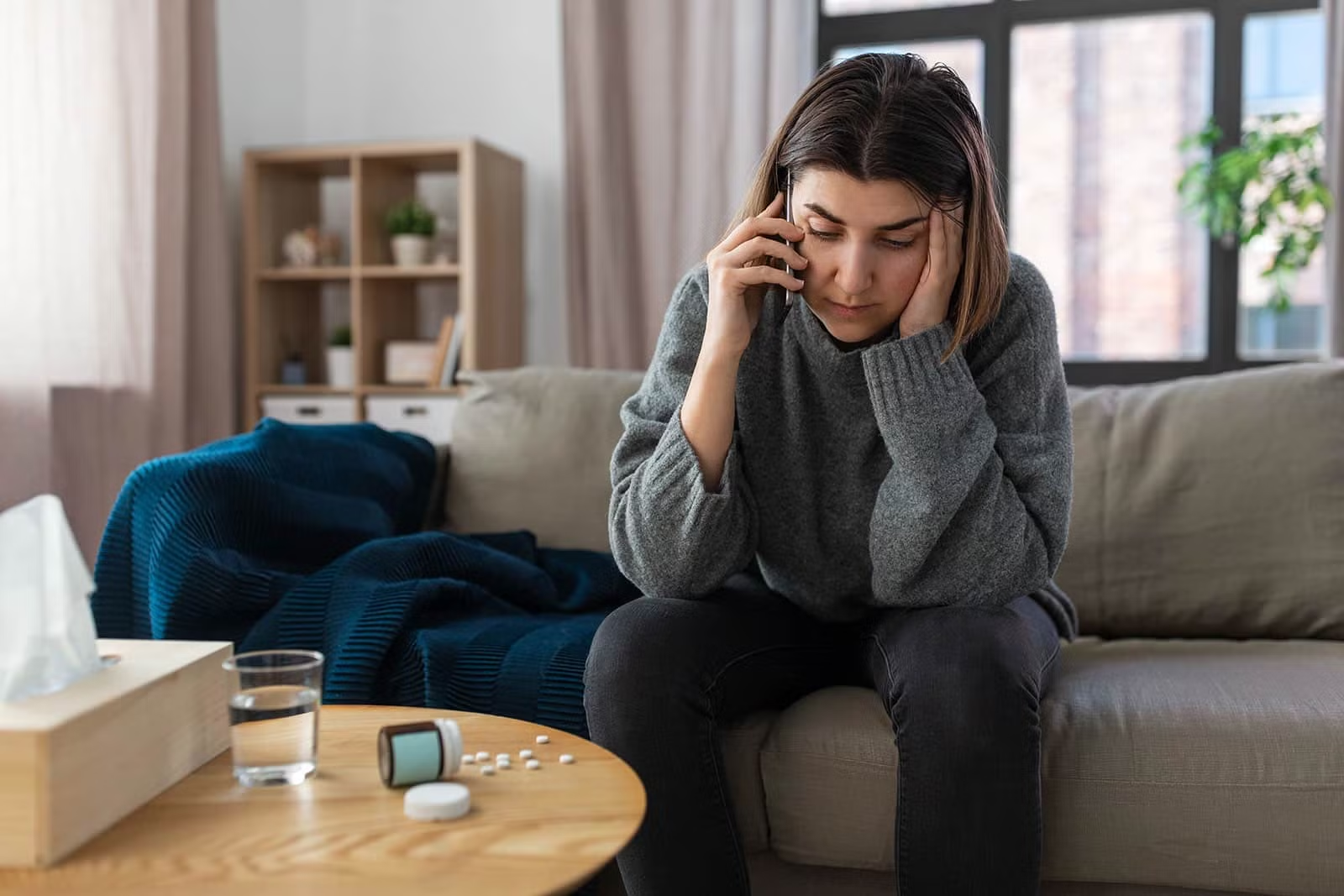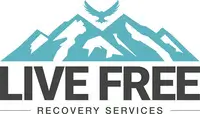Halcion (Triazolam) Addiction Treatment in New Hampshire
Are you dependent on Halcion?
Home > Treatment > Benzodiazepines > Halcion
Are you dependent on Halcion?
Are you or a loved one dependent on Halcion? Halcion is the brand name for Triazolam, which is a Schedule IV drug. Halcion is a benzodiazepine that’s used to temporarily treat insomnia by helping individuals fall asleep and stay asleep so that they feel well-rested in the morning. Doctors typically prescribe it for one to two weeks. The medication has a low likelihood of causing addiction. However, individuals who have a history of substance abuse or taking more of their medications than prescribed could develop a dependency. Let’s take a look at the signs of a Halcion dependency and how it’s treated.

What is a Schedule IV drug?
Drugs are classified into five categories or schedules that are determined by the substance’s likelihood of being misused. For example, Schedule I substances are drugs that have no medical use and an extremely high likelihood of misuse and dependency. Halcion is a Schedule IV medication, meaning it has a low risk of causing dependency. Some other medications that are also Schedule IV include Valium and Ambien.
How is Halcion (Triazolam) normally used?
Halcion is a controlled substance typically prescribed to help people manage short-term insomnia. Doctors usually prescribe it to patients for less than two weeks. If an individual needs to treat their insomnia for a longer period of time, another medication is usually recommended. Individuals, who are prescribed Halcion, are encouraged to take it on nights when they have time to sleep for seven or eight hours. Halcion should not be taken on nights when the individual cannot dedicate at least seven hours to sleep. This can cause memory problems like short-term memory loss, and drowsiness.
What are the side effects of Halcion abuse?
Halcion should be taken directly before going to bed. This is because the medication can cause dizziness and increase a person’s risk of falling. Individuals may also feel groggy during the day. If any of these symptoms appear or get worse, the individual should talk to their doctor. The dosage may need to be adjusted or a different medication may need to be prescribed.
Halcion can also cause serious side effects. If the individual experiences memory loss, abnormal thoughts, mood swings, changes in mood, confusion, aggressive behavior or an increase in depression symptoms, the use of the medication should be evaluated and another medication for insomnia may need to be prescribed.
Halcion can cause dependency.
While the risk of becoming dependent on Halcion is low, it can still happen. This most often happens when people are prescribed a high dose of Halcion and then take more of it than is prescribed. The risk of dependency and severe side effects also increases if the individual takes other drugs or drinks alcohol while taking Halcion. If an individual experiences slow breathing, lightheadedness, dizziness or has difficulty waking up, they should immediately contact their medical provider.

What are the signs of Halcion addiction?
An individual may be dependent on Triazolam if they take higher doses of the medication or more of the medication than was prescribed by their doctor or treatment provider. Individuals who take Triazolam for an extended period of time can also build a tolerance and become mentally and physically dependent. Additionally, taking Triazolam for reasons other than why it was prescribed, crushing the pills and snorting them or mixing them into drinks may also indicate a physical dependence.
What happens when a person becomes mentally and physically dependent on Halcion?
When an individual is dependent on a medication, it can cause unwanted side effects if they stop using it or try to stop using it. The mental dependency may lead to the individual believing that they can’t get to sleep without Halcion, and stopping the medication may lead to cravings, and mental health issues such as anxiety and panic attacks. Additionally, stopping the medication after becoming dependent can lead to severe physical withdrawal symptoms, including nausea, tremors, sweating, headaches, muscle pain and heart palpitations. In severe cases, the individual may also experience seizures. With that being said, it’s not recommended to stop taking Halcion suddenly. Instead, the individual should get professional treatment for their dependency so that they can be monitored for severe Halcion withdrawal symptoms and potentially life-threatening complications.
Is there an overdose risk when taking Halcion?
Halcion does carry the risk of an overdose. Individuals who experience Halcion overdose may appear extremely sedated. They may have slow or shallow breathing. They may slur their speech and have impaired coordination. In severe cases, the individual may experience random muscle movements and have seizures.
How long do the symptoms last after abstaining from Halcion?
Pfizer recommends tapering off of Halcion. It’s not recommended to suddenly cease taking the medication due to the risk of serious complications. If an individual develops Protracted Withdrawal Syndrome, the effects can last anywhere from a few weeks to 12 or more months.

What is the treatment for Halcion addiction?
The treatment plan for Halcion addiction is slightly different than most other drugs. This is because the detox phase typically involves reducing the dosage so that the individual is gradually weaned off of the medication. In some cases, an additional prescription medication may be prescribed to help with the withdrawal symptoms and to reduce the desire to take more of the medication. When this type of treatment is prescribed, it is called medication-assisted therapy.
Types of Treatment Programs for Halcion Dependence
There are many types of treatment options for individuals who are suffering from Halcion dependence. The right treatment program depends on the individual’s level of addiction, history of relapse and their personal and professional obligations.
- Inpatient – This is where you live in the rehabilitation center and receive treatment. This type of program helps the individual focus on their recovery without all the distractions and triggers of daily life.
- Intensive Outpatient – For individuals who don’t need as much treatment or have responsibilities that don’t allow for inpatient treatment, outpatient treatment is an option. This program involves attending treatment sessions at the rehab center and returning home to their daily lives.
- Partial Hospitalization – Partial hospitalization programs are day programs. This is where the individual checks into the treatment center for either a five or eight-hour program each day and attends the program for five or seven days a week.
- Long-Term Rehabilitation – Long-term rehabilitation works well for people who suffer from drug abuse and who have had problems relapsing in the past. These programs can last anywhere from three to 12 months or longer.
- Men’s Rehabilitation – These treatment programs are specifically designed for men and the challenges they face when recovering from substance abuse.
- Women’s Rehabilitation – These programs are specifically designed to help women recover from addiction and long-term use.
- Young Adult Rehabilitation – These programs are designed to help young adults recover from addictions and learn new coping skills for the specific challenges they face in their daily lives.
- Sober Living – Sober living is the step between inpatient treatment and going home. These are sometimes referred to as halfway houses. Individuals live in these homes and continue receiving treatment while learning valuable life skills and how to live a sober life.
- Relapse Prevention – These programs help individuals stay sober after they’ve completed their initial treatment program.
Types of Therapy for Halcion Dependency
All of the available treatment programs include therapy. The two most common types of therapy are individual and group therapy. However, many individuals greatly benefit from the addition of Dialectical Behavior Therapy, Cognitive Behavioral Therapy and Motivational Enhancement Therapy.
- Dialectical Behavior Therapy – Dialectical Behavior Therapy helps individuals become mindful, learn to tolerate distress, practice stress management and regulate their emotions.
- Cognitive Behavioral Therapy – Helps individuals discover negative thought patterns and behaviors and make positive changes.
- Individual Therapy – This therapy involves talking to a licensed therapist one-on-one in order to reveal and heal the underlying causes of the substance use disorder.
- Group Therapy – These are group therapy sessions with one or more therapists where participants discuss their challenges and how they overcame them as well as to receive advice and guidance.
- Motivational Enhancement Therapy – This type of therapy helps individuals feel motivated to stop using their drug of choice. This therapy can be one-on-one or can involve significant others or family members.
Treatment for Halcion Dependency at Live Free Recovery Services in New Hampshire
If you need treatment for a Halcion dependency, we can help you at Live Free Recovery Services in New Hampshire. We offer inpatient, outpatient and partial hospitalization programs. We even have programs that are specifically designed for men, women and young adults.
If you’re ready to get treatment for your Halcion dependency, contact us today.
Did this article answer your questions?
"*" indicates required fields
Take the First Step Towards a Brighter Tomorrow
At Live Free Recovery, we’re committed to walking alongside you on every step of your journey. Our compassionate team is here to provide the guidance and support you need to overcome addiction and reclaim your life. Don’t wait—reach out today to speak with someone who truly understands your struggles and can help you take that important first step toward healing and a fresh start.
Your path to recovery starts here.
